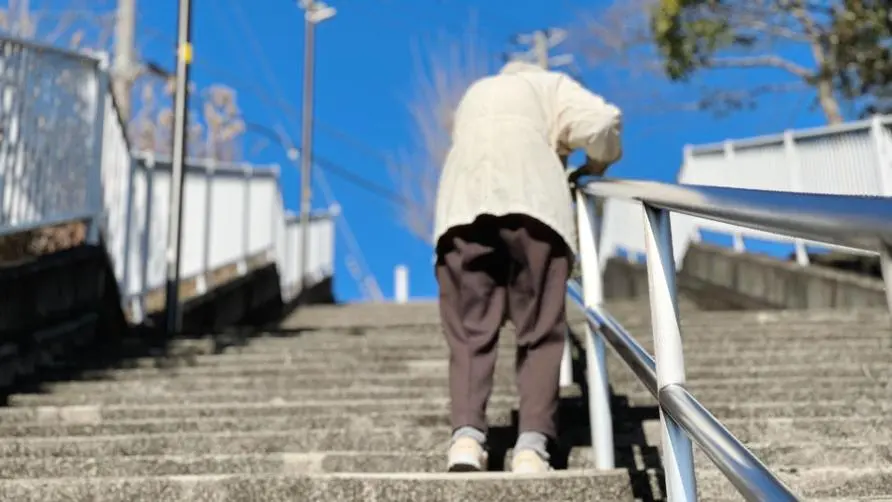Climbing one or two flights of stairs makes me out of breath! Doctor: If "angina pectoris" is not treated in time, the mortality rate reaches 30%

Climbing one or two flights of stairs makes me out of breath! Cold weather may worsen symptoms
Mrs. Jiang, who is in her 70s, suffers from diabetes, high blood pressure, and high blood lipids. She usually takes medicine to control the condition in the outpatient clinic. In the past month or two, she often feels short of breath when doing activities. She feels out of breath after climbing one or two flights of stairs. I’m still out of breath, and my symptoms seem to have gotten worse since the weather has cooled down recently. I originally thought it was a lung problem, but the outpatient X-ray examination showed nothing abnormal and the respiratory function was normal.
As wheezing symptoms have been bothering Mrs. Jiang, she was referred to the cardiology department. After arranging a myocardial perfusion examination, it was discovered that there was local hypoxia in the myocardium. After discussions between the doctor and her family, Mrs. Jiang was hospitalized for a cardiac catheterization examination. It was confirmed that there was severe stenosis in the left anterior descending coronary artery of the heart. After balloon dilation and the placement of a medical stent, her symptoms started to feel the next day. There was significant improvement, and drug treatment was continued after discharge.
Thrombosis induced by angina pectoris may lead to “myocardial infarction”. Medical warning: If not treated in time, the mortality rate can reach 30%
The operation of the heart relies on the coronary arteries distributed on the surface to supply oxygen and nutrients. As you age, or if you have family history of cardiovascular disease, high blood pressure, hyperlipidemia, diabetes, obesity, smoking and other cardiovascular risks, blood vessels will appear. The state of chronic inflammation and the accumulation of cholesterol plaques gradually harden and narrow blood vessels, resulting in myocardial hypoxia.
At this time, in addition to the symptoms of chest tightness and chest pain, there will also be symptoms of “breathing during activity”. This type of patients is currently classified as chronic coronary syndrome, commonly known as “angina pectoris”. The continuous lack of oxygen in the heart of such patients is not only easy to cause discomfort and reduce the quality of life, but may also gradually worsen the function of the heart.
If the plaque in the blood vessel unfortunately ruptures, it will induce the formation of thrombus and cause an acute blockage of blood flow, which is commonly known as “myocardial infarction”. At this time, there is no oxygen supply to the myocardium, which will cause acute damage and cause severe chest pain, arrhythmia, even fainting, and sudden death. If not treated in time, the mortality rate can be as high as 30% or more! Typical symptoms of chronic coronary heart disease include chest tightness and pain, which may be accompanied by cold sweats and may involve the chin, shoulders or arms. The feeling of chest tightness and pain usually does not last more than fifteen minutes. Symptoms are triggered by activities and can be relieved by rest. A large number of elderly people, women, and diabetic patients have atypical symptoms, often manifesting themselves as wheezing like Mrs. Jiang.
Autumn and winter are the peak seasons for disease exacerbation! What are the clinical detection methods for angina pectoris?
In autumn and winter, sudden changes or drops in temperature may cause vasospasm and contraction, worsening symptoms. When a patient comes to the outpatient clinic for the above symptoms, we will first evaluate the chance that the patient’s symptoms are due to cardiovascular disease. Usually, the older the patient is or if he or she also has cardiovascular risk, the greater the estimated chance. At the same time, the doctor will arrange chest X-ray, electrocardiogram and cardiac ultrasound to evaluate the heart function.
If it is suspected that the heart may be hypoxic, the doctor will arrange appropriate examinations based on the patient’s condition to determine whether the patient has myocardial hypoxia, such as:
Exercise electrocardiogram: Have the patient walk briskly on a treadmill while monitoring the electrocardiogram for changes in hypoxia or arrhythmia.
Nuclear medicine myocardial perfusion test: Inject radioactive isotopes into the blood and observe the distribution of the isotopes in the heart muscle under pressure and at rest to determine the area of myocardial hypoxia.
In recent years, coronary angiography through computerized tomography has received more and more attention. This examination can directly observe the structure of blood vessels and the pattern of lesions, which is very helpful for pre-cardiac catheterization evaluation. However, currently Taiwan’s health insurance does not cover it, so you need to bear the cost yourself. . Each type of examination has advantages and disadvantages. You can decide which type of examination is suitable for you after discussing it with your cardiologist.
Reduce the risk of future cardiovascular secondary obstruction and cardiac catheterization surgery “three-pronged approach” to alleviate symptoms
If the patient is confirmed to have myocardial hypoxia, if the condition is stable or the impact is not large, drug treatment can be considered first. Drugs can be used to reduce the heart’s oxygen demand, expand cardiac blood vessels, or prevent myocardial infarction. If drug treatment is ineffective, or if multiple blood vessels are found to be narrowed and the systolic function of the heart is impaired, “cardiac catheterization” treatment can be further considered.
The doctor will establish a pipeline through the radial artery in the hand or the femoral artery in the groin, send the catheter to the opening of the coronary artery in the heart, and inject contrast agent to take pictures. If there is obvious stenosis, a balloon can be used to open it and a stent can be placed to restore smooth blood flow. Current research shows that stent placement can indeed effectively improve the symptoms of angina caused by hypoxia. The current mainstream use of drug-coated stents can further reduce the risk of re-occlusion in the future.
With the advancement of technology, in addition to macroscopic vascular photography, there are now more sophisticated intravascular imaging examinations, which use ultrasound or laser light sources to directly explore the structure of blood vessels and assist in accurate stent placement. After vascular interventional surgery, antiplatelet drugs will need to be taken for a long time to prevent sudden blood clots in blood vessels and cause myocardial infarction.
If multiple vascular lesions or lesions in the left main trunk are found during examination, sometimes it is also necessary to evaluate whether to use surgical vascular bypass, which can achieve longer-lasting results. All in all, always pay attention to whether you have cardiovascular risks, actively control them, and cooperate with doctors’ examination and treatment. You can detect and handle them early to improve your quality of life and reduce the probability of cardiovascular events.
Extended reading:





